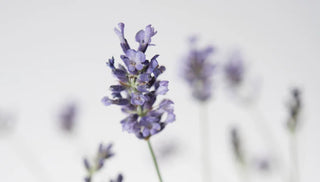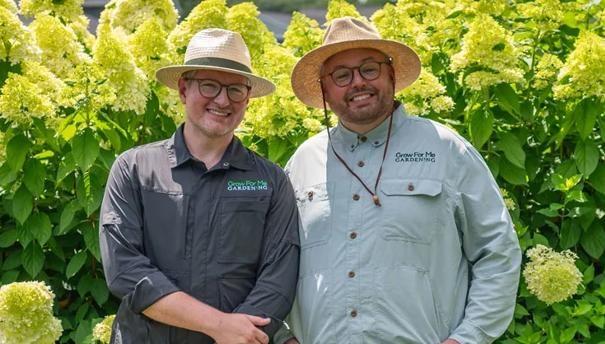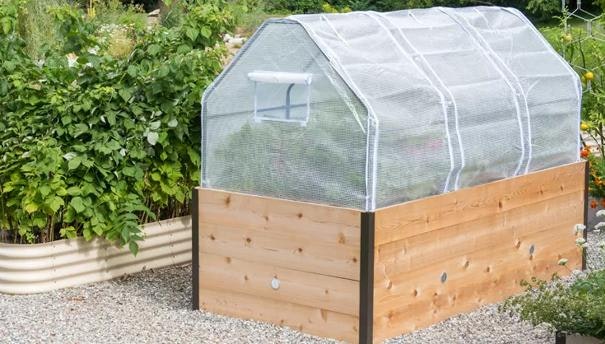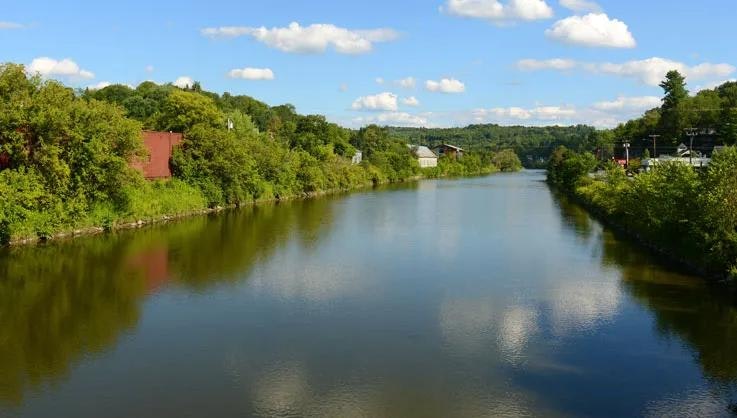Lavender is fantastically fragrant, and attracts loads of bees, butterflies, and moths to the garden. It's airy form, rich purple flowers, and gray-blue woody leaves provide visual interest whether potted up in a container or planted out in a landscape. As a woody plant, lavender produces gorgeous flowers on new growth in early to mid summer. It makes an excellent cut flower and dried flower.
Types of Lavender
Lavender, with its calming fragrance and versatile uses, comes in various cultivars. From the classic English Lavender (Lavandula angustifolia) to French Lavender (Lavandula dentata) and Spanish Lavender (Lavandula stoechas), each variety has its unique characteristics and growth habits.

- English lavender varieties include 'Sharon Roberts' and 'Munstead'.
- French lavender varieties include 'Grey' and 'Royal Crown'
- Spanish lavender varieties include 'Purple Ribbon' and 'Anouk'
How to Propagate Lavender
When it comes to propagating lavender, cuttings are the go-to method. Snipping a 3- to 4-inch piece from a healthy lavender plant and rooting it in well-draining soil creates new, identical plants. Alternatively, starting lavender from seeds is possible, but it requires patience and care.
Starting Lavender from Seed
Begin sowing lavender seeds indoors about 10 to 12 weeks before the last frost date. Patience is key as germination might take a few weeks. For outdoor planting, aim for after the last frost when the soil has warmed up.
When To Plant Lavender
In climate zones 6 and warmer, plant lavender outdoors in mid-fall — a few months of cooler winter weather will help get roots established. In colder zones (5 and below), plant out in spring after the last threat of frost.
Lavender matures relatively slowly. From seed, it can take 2-3 months to establish itself before flowering. On the other hand, transplanted or mature plants may flower within the first year but reach their full aromatic and visual potential in subsequent years.
Where to Plant Lavender
As a Mediterranean native, lavender loves griitty soil and plenty of sun. Mimicking these conditions will ensure happy, healthy lavender plants!
Light: Lavender thrives in warm temperatures and at least 6-8 hours of full sun per day.
Soil: Lavender does best full sun and grainy, well-drained soil that is neutral to slightly alkaline in pH. Lavender doesn't grow well in heavy clay or overly nutrient-rich soil — if your soil is heavy, amend with sand or gravel to improve drainage.
How to Care For Lavender
Watering
Lavender loves a good drink of water, but it does NOT do well in humid or consistently moist conditions. Let soil dry between waterings — overwatering can lead to root rot. Lavender is very drought-tolerant once established.
Pruning
Pruning lavender is essential to maintain its shape, encourage healthy growth, and prolong its lifespan. The ideal time to prune lavender is typically after it finishes flowering, usually in late spring or early summer. This timing allows the plant to produce new growth before the onset of winter. Dead stems, however, can be removed at any time of year.
Staking and Supports
Lavender grows in a self-contained shrubby mound 1-3 feet in diameter, depending on the variety. It does not require staking or other supports.
Fertilizing
Lavender doesn't require any fertilizer.
Lavender Pests and Problems
Lavender typically faces few pest or disease issues. Keep an eye out for aphids or spider mites and wash them off with a strong stream of water or use insecticidal soap if necessary. Overwatering and poor ventiliation are the main causes of lavender failure — root rot and powdery mildew are the main plant diseases to watch for. It's woody, fragrant leaves deter most wildlife.
End of Season Care
In colder zones (5 and below), lavender will need either a thick layer of mulch or other protective plant cover to survive the winter. In the early spring, cut the woody stems of older plants back by 1/3 to help encourage new growth and more flowers.
How To Harvest Lavender
Harvest lavender just before the flowers open fully for optimal fragrance and oil content. Bundling and hanging stems upside down in a dry, airy place will allow them to dry - lavender is an excellent dried flower. Once dry, remove the buds for use or decoration.
Lavender FAQs
 Full-spectrum LED grow lights make it possible to grow gorgeous lavender indoors.
Full-spectrum LED grow lights make it possible to grow gorgeous lavender indoors.1. Can I grow lavender indoors?
Growing lavender indoors can be tricky, as plants need tons of light. Place pot in a sunny south window where it will receive as much light as possible, or even better — use an LED grow light. In low light, growth may become weak and spindly and the plant will cease flowering. Rotate the pot weekly for uniform growth.
2. How often should I prune lavender?
The ideal time to prune lavender is typically after it finishes flowering, usually in late spring or early summer. This timing allows the plant to produce new growth before the onset of winter.
3. Is lavender deer-resistant?
Yes, lavender's strong fragrance tends to repel deer and other browsing animals.




